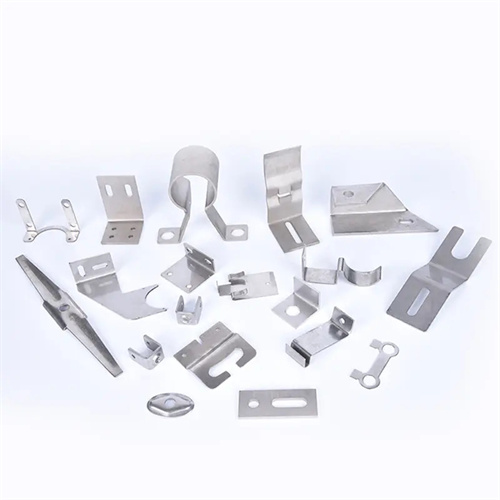Brass strips for radiator water chamber and main plate
Brass strip for radiator water chambers and main plates is a key material in automotive radiators. It’s primarily used to create the water chamber (liquid reservoir) and main plates (the component connecting the heat pipes to the water chamber). It requires excellent corrosion resistance, weldability, and formability, playing a vital role in the vehicle’s cooling system. Commonly made from H62 or H65 brass, it contains 62%-65% copper and 35%-38% zinc. Some grades incorporate trace amounts of tin (0.1%-0.3%) to enhance corrosion resistance, and silicon (0.05%-0.1%) to improve weldability. Strip thickness typically ranges from 0.3-1.0mm and widths from 50-200mm. Extremely high dimensional accuracy is required, with a thickness tolerance of ±0.01mm and a flatness deviation of ≤1mm/m to ensure a tight fit with the heat pipes.

The production process for this type of brass strip requires multiple precision machining steps and performance control. First, electrolytic copper with a purity of at least 99.95% and high-purity zinc ingots are smelted in a medium-frequency induction furnace at a controlled temperature of 1080-1120°C. Alloying elements are then added and thoroughly stirred to ensure uniform composition (copper content deviation ≤ 0.2%). The molten copper is then rolled using a continuous casting and rolling mill into cast coils 8-12mm thick, resulting in a fine and uniform grain structure. Subsequently, the strip undergoes multiple cold rolling passes, gradually thinning it to 1.5-2.0mm, with each pass reducing the thickness by 25%-35%. Annealing treatment (550-600°C under nitrogen atmosphere) is performed in between to eliminate work hardening. Finishing rolling is performed using a 20-high cold rolling mill, rolling the strip to the target thickness at a rolling speed of 20-40m/min, ensuring a surface finish of Ra ≤ 0.4μm. Finally, low-temperature annealing (300-350°C) is carried out to control the hardness of the strip to HV70-90, which is convenient for stamping and forming. After cleaning and slitting, it passes air tightness test and welding performance test to ensure product quality.

The formability and corrosion resistance of brass strip are crucial in the manufacture of automotive radiator water chambers. The upper and lower water chambers of passenger car radiators are stamped from H65 brass strip. Its excellent deep-drawability allows for complex cavity structures to be formed in a single step, with a stretching rate exceeding 35%. A certain automotive radiator manufacturer has reduced its water chamber scrap rate to below 0.5%. Due to the larger volume of commercial vehicle radiator water chambers, 0.8-1.0mm thick H62 brass strip is used. This is welded together to form the water chamber. Its excellent weldability ensures a weld strength of ≥200 MPa. A heavy-duty truck radiator water chamber has proven leak-free under a 1.2 MPa pressure test. In hybrid vehicles, the radiator water chambers come into contact with antifreeze and motor coolant. Using tin-containing brass strip has improved corrosion resistance by 40%, extending its service life to over eight years.

The radiator’s main plate is a key component connecting the water chamber to the heat pipes, placing stringent demands on the brass strip’s strength and sealing properties. Passenger car radiator main plates utilize 0.3-0.5mm thick H65 brass strip, with multiple tube holes formed through precision stamping. The hole positioning tolerance is controlled to ±0.02mm, ensuring precise alignment with the heat pipes. This has resulted in one manufacturer increasing main plate assembly efficiency by 25%. Large bus radiator main plates, which carry more heat pipes, utilize 0.6-0.8mm thick high-strength brass strip (tensile strength ≥380MPa). This ensures a stable connection even under vibration. Road tests at a bus manufacturer have shown a 90% reduction in loosening of the main plate and heat pipe connections. In construction vehicle radiators, the main plates are nickel-plated (3-5μm thickness) to further enhance corrosion resistance and withstand harsh operating conditions.

As the automotive industry moves toward lightweighting and high reliability, the performance of brass strip used in radiator water chambers and main plates continues to improve. Manufacturers have developed ultra-thin, high-strength brass strip (thickness 0.2-0.3mm, tensile strength ≥400MPa), which reduces water chamber weight by 15%, significantly reducing the weight of the radiator assembly for a new energy vehicle. For high-temperature cooling systems, heat-resistant brass strip (with a 0.5% nickel addition) has been developed, improving oxidation resistance by 30% at 120°C and making it suitable for turbocharged engines. Regarding environmental protection, lead-free brass strip (lead content ≤ 0.005%) is being promoted to comply with EU REACH regulations and expand export markets. In the future, as electric vehicle range demands increase, demand for brass strip for efficient cooling systems will continue to grow, driving the material towards higher performance and thinner specifications.
